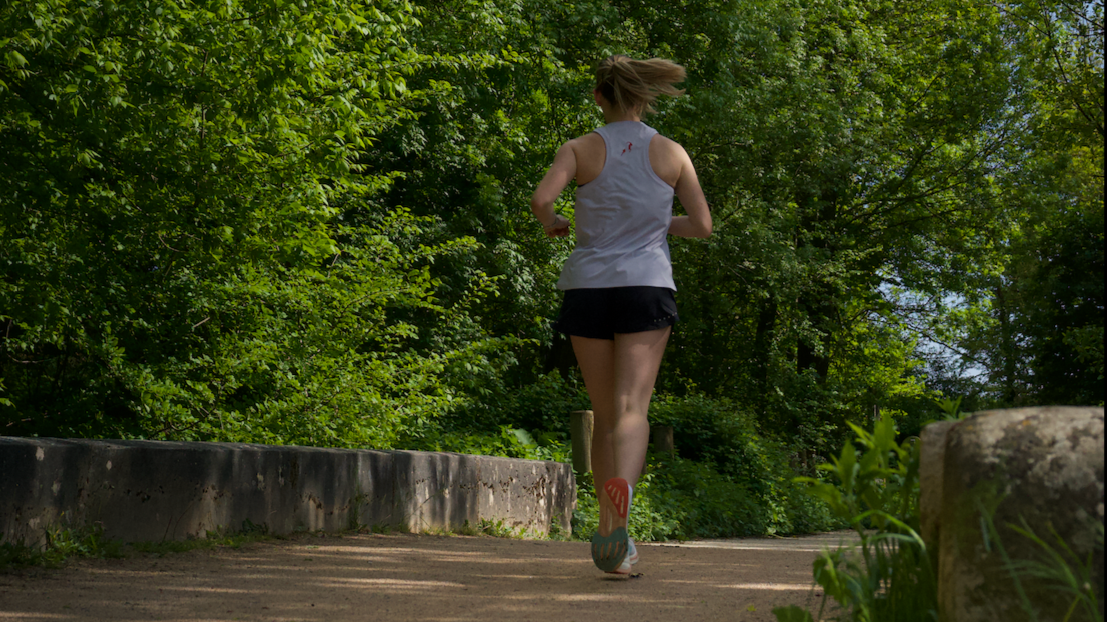
Ten mistakes to avoid when running
How to avoid the most common running mistakes? It's easy to answer this question when you've already made almost all of them (mea culpa). In solidarity, we must also help other runners avoid these same mistakes. This is precisely the goal of this article. Here is a list of 10 mistakes to avoid when running. The list is divided into two: 5 mistakes to avoid before or after the race and 5 mistakes to avoid during the race. The first 5 tips are essential because they can prevent injury. The other 5 are key to ensuring that running, even though it's a demanding endurance sport, remains, above all, a pleasure.
Mistakes to avoid before or after the race
1. Program a training load without progression
When you're new to running or getting back into running after a break, a common mistake is wanting to do everything right away and start running sessions too quickly, increasing distances and speeds without enough progression. This is a perfect recipe for injury. The body needs time to adapt, especially the muscles and joints. Beware of the risk of tendonitis, knee, shin, or IT band (iliotibial) pain. A simple rule to follow: from one week to the next, never increase your cumulative distance or your target pace by more than 10%, and definitely don't increase both distance and speed by more than 10% from one week to the next. Follow programs that are adapted to your level and your goals and are progressive. Patience will pay off!
2. Skipping muscle strengthening and flexibility sessions
Muscle strengthening or flexibility sessions are often overlooked because they may seem secondary to running sessions. However, they are essential to improve performance, avoid injuries and promote recovery. Muscle strengthening sessions will help relieve the tendons by absorbing a greater part of the impacts and stabilizing the joints thanks to more developed and better adapted musculature at the level of the trunk, hips and legs. At the same time, flexibility sessions will improve and smooth running by allowing greater fluidity and range of motion especially in the hips, calves or ankles which are very stressed during running.
3. Not recovering enough and not taking care of your sleep
Recovery is an integral part of a balanced training program. It's during recovery phases that the body repairs itself (for example, all the micro-injuries created by an interval session). At a minimum, it's recommended to set aside one or two recovery days per week without any physical activity. These are strategic days to continue progressing and staying mentally motivated. Sleep is the other essential aspect of a successful recovery strategy. Well-rested runners have better cardiovascular performance and can run longer before fatigue sets in. Sleep is also a key factor in strengthening the immune system.
4. Not testing your nutrition before the big day
In running, especially for long distances, eating well is essential to replenish your energy and be able to continue running for several hours. It is essential to test different foods during training to ensure that you can digest them well. Running with an upset stomach during a race makes the experience not only difficult, but also extremely unpleasant. Therefore, avoid unpleasant surprises by testing your nutrition on long runs in training and not trying new foods on the day of the race. Stick with safe options. Foods that have been successfully tested and retested during your long runs will become part of your routine and a reassurance to be able to perform, last, and avoid any digestive problems on the day of the race.
5. Not testing new shoes before the big day
Just like new foods, new shoes should be tested gradually during your training sessions to ensure they are a good fit. A few minutes of testing in the store may be too short to detect some adaptation problems that appear during longer sessions. I can cite, based on personal experience, the gradual onset of tendonitis with running shoes after changing the drop and cushioning (and brand) with a new model that was supposed to correct my stride... or a trail running shoe model that literally cut my ankles on long trail runs. You should therefore test new shoes in training over several sessions, starting with short sessions and then increasing the distance to ensure that the shoes fit you and do not cause small or large adaptation problems that could lead to injury.
Mistakes to avoid while running
6. Not hydrating enough
Not hydrating enough is certainly the most unforgiving mistake in running, generally speaking and especially if the temperature and humidity are quite high. It's especially frustrating to lose your energy after weeks or months of training due to an easily avoidable mistake. Even very slight dehydration will have a major impact on your performance level. With only 1 or 2% dehydration, we become less resilient, fatigue sets in more quickly and our coordination level drops, and therefore our running technique and efficiency. With 3% or more dehydration, cramps can start to appear, heart rate and body temperature rise and pace will drop considerably. It is therefore imperative to drink before the race to arrive perfectly hydrated and to continue to drink very regularly in small sips during the race (even more often when it's hot and humid). For longer races (half marathons, marathons, ultras), it is recommended to drink drinks containing electrolytes and water (not just water).
7. Leaving too quickly on the big day
Another classic mistake is setting off too fast on race day, especially for long races like marathons. It's an easy mistake to avoid on paper, but a mistake that almost all of us make, and certainly too often. Why? Because on race day, with the atmosphere, the adrenaline, the excitement, the competition between runners, and the final week's fine-tuning, everything pushes us to want to set off fast. When the opposite is what you should be aiming for. Ideally, the first few kilometers should be run a little 'inward' to ensure a gradual muscle awakening and a build-up of power over the first few kilometers. In a marathon, this energy preserved over these first kilometers will be welcome and will be worth double (if not more) thirty kilometers later when the legs are heavy and fatigue begins to set in.
8. Not training at least 80% of the time at a moderate pace
During training, another fairly common mistake is running 'too fast too often' when 80 to 90% of the time, we should ideally be running in zone 2. That is, running at an easy pace at 60-70% of our maximum heart rate, a pace where we can talk quite easily. This is counterintuitive because the pace can seem rather slow, almost boring. However, zone 2 is the basis for accustoming our body to running in the aerobic zone, a low to moderate intensity zone where our body uses oxygen to transform fat (and a little sugar) into energy. Repeated training in this aerobic zone improves our endurance, develops our ability to burn fat (lipids) and therefore preserves carbohydrate reserves. A good aerobic base also allows you to better support training in zones 4 or 5, such as interval, threshold, or hill workouts (the other 10 to 20% of our training). This optimal training mix, with 80 to 90% in zone 2, isn't just for amateurs. It also applies to top runners, even if their pace in zone 2 will of course be much higher. But the logic remains the same: stay in zone 2 the vast majority of the time.
9. Go for a run in the heat
This mistake echoes the one about insufficient hydration. The difference is that even when trying to hydrate properly, high heat and humidity conditions will make the necessary cooling of our body through perspiration and sweat evaporation increasingly difficult, if not impossible. In high heat, the heart rate will tend to rise even more than normal, and with high humidity, sweat will no longer evaporate easily. The risk can be considered moderate above 25°C and 60% humidity and high around 28-30°C and over 70% humidity. With a temperature of 30°C or higher and a humidity level of 70% or higher, it is not recommended to go running. In this case, it is better to plan outings very early in the morning or indoors on a treadmill in an air-conditioned room. If you experience dizziness, chills, or headaches while running in hot weather, you should stop running immediately to avoid heatstroke, or even a medical emergency in the worst case scenario.
10. Don't stop running if you have persistent pain .
This last mistake is quite frustrating. It sometimes happens due to over-motivation. You've been training for weeks and suddenly a pain appears during a session. It's easy to tell yourself that it will pass and above all you want to avoid falling behind on the rest of your training program. So instead of taking a little rest, you sometimes run again even though the pain hasn't disappeared or it reappears at each session. The risk, of course, is to aggravate the situation by running with the beginnings of an injury and potentially making it chronic (like the beginnings of tendonitis that will worsen). It's not always easy to tell the difference between temporary discomfort and the beginnings of an injury, but generally if the discomfort persists over several sessions, it's not by chance. It seems obvious, but it's clearly better to adopt a cautious attitude, be preventive and ensure that the body recovers, repairs itself and if necessary consult a doctor for treatment and recovery. The opposite case, where you continue to push yourself, often results in a much longer period of treatment or rest, and ultimately much more frustrating than a few weeks of forced rest to recover. The recovery period will, of course, depend on the type of injury and its severity. But even for minor injuries, stopping running for a few days or weeks remains the best option.
Now you're aware of some of the common mistakes many runners make (even after years of experience). Avoiding these mistakes will ensure you'll have a longer run and will allow you to fully enjoy the pleasure that running brings, outing after outing.



Leave a comment
This site is protected by hCaptcha and the hCaptcha Privacy Policy and Terms of Service apply.